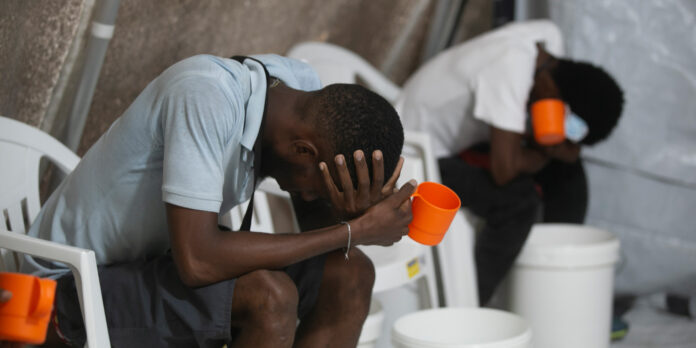Ghana's Hidden HIV Crisis: A Growing Epidemic Among Vulnerable Populations

Ghana's HIV epidemic has reached a critical point, with certain groups facing a disproportionately high risk of infection. Despite efforts to combat the disease, the country's most vulnerable populations continue to struggle.
In Ghana's urban centers, the HIV epidemic is taking a devastating toll. The disease is spreading rapidly among certain groups, including those who engage in high-risk behaviors. These individuals often lack access to basic healthcare services, leaving them vulnerable to infection.
HIV prevalence is consistently higher among women than among men in all age groups, with 56% of infections occurring among females and 44% among males, according to the 2014 HIV Estimates in Ghana. The 2014 Demographic and Health Survey (DHS) report indicates a HIV prevalence of 2.0% in Ghana.
However, there are pockets of higher prevalence rates among Key Populations (KP), including Men having sex with men (MSM) at 17.5%, Female sex workers (FSWs) at 11.1%, and Prison inmates at 2.3%.
The Ghanaian government has launched initiatives aimed at combating the HIV epidemic, but more needs to be done. Health officials are working to increase access to HIV testing and treatment, but stigma and discrimination remain major barriers.
In some parts of the country, HIV prevalence is significantly higher than the national average. These areas require targeted interventions to address the unique challenges they face. By focusing on these hotspots, health officials hope to slow the spread of the disease and prevent new infections.
Four regions in Ghana, namely Greater Accra, Eastern, Ashanti, and Western Region, are disproportionately affected by the epidemic, accounting for 58% of the country's population and 75% of people living with HIV in Ghana. These regions also contain hotspots for female sex workers and men who have sex with men.
Since 2003, there has been a consistent increase in the number of men and women who have undergone HIV testing, with 43% of women and 20% of men having received their test results, according to the 2014 DHS report.
Despite this progress, the 2014 Ghana Epidemiological and Impact Analysis highlights three risk factors of concern: low comprehensive knowledge of HIV, increasing multiple sexual partnerships among men, and a declining trend in condom use, especially among men. People living with HIV (PLHIV) and Key Populations (KPs) continue to face stigma and discrimination, underscoring the need for strengthened health and community systems.
Ghana's HIV epidemic is a complex and multifaceted issue, requiring a comprehensive response. By working together, health officials, community leaders, and individuals can help to combat the disease and create a healthier, more resilient nation.
Source : Florence Kyei / Lead News Online
The author is an Health & Climate Journalist and Editor at Lead News Online.
Email: [email protected]
Linkedin: https://www.linkedin.com/in/florence-kyei-970764140
Twitter: https://x.com/evlogia_7















































:max_bytes(150000):strip_icc():format(webp)/Health--GettyImages-1352426516-0457fbd8558a43e6842e576e5007b503-bede14bfa3d548ebb11d5edf48c3485c.jpg)








